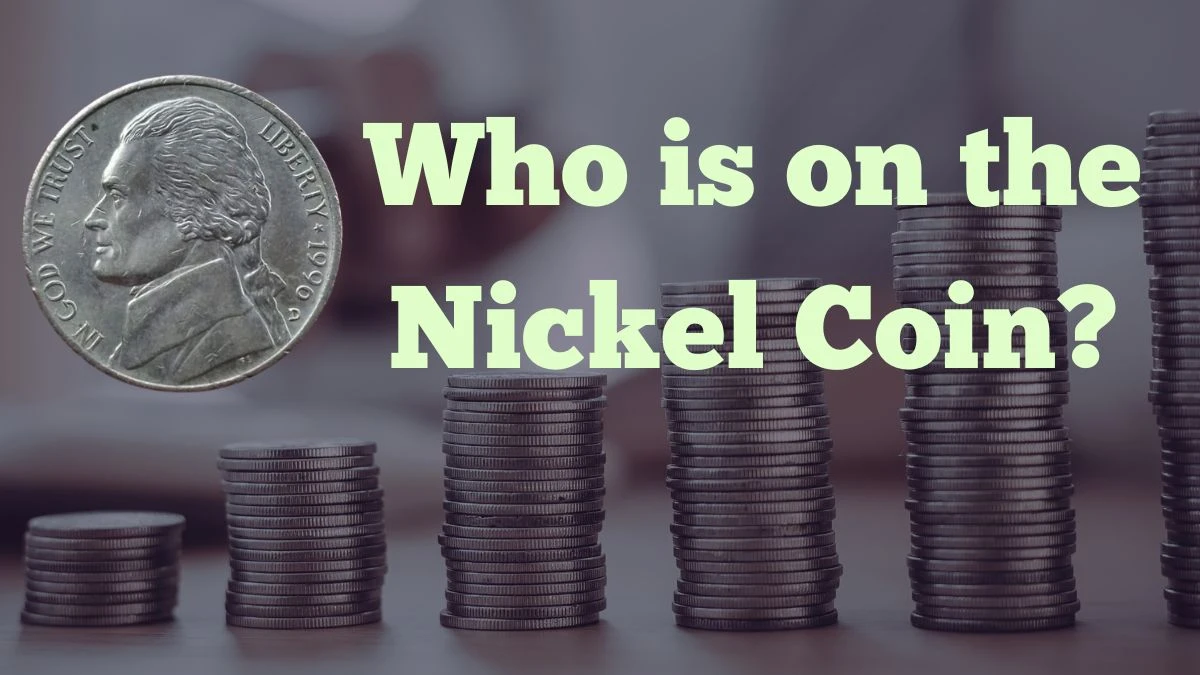Nickel United States Coin
The nickel is a five-cent coin issued by the United States Mint and has been in circulation since 1866. It is composed of cupronickel, a durable alloy made of 75% copper and 25% nickel, giving the coin its name. The nickel weighs 5 grams, has a diameter of 0.835 inches (21.21 mm), and a thickness of 0.077 inches (1.95 mm).
Before the nickel, the U.S. used a smaller silver coin called the half dime, minted from 1792 to 1873. However, during the Civil War, precious metal coins were hoarded, leading to a shortage in small change.
In response, Congress authorized the minting of a base metal five-cent coin, resulting in the Shield nickel in 1866.
Over the years, the design of the nickel has changed several times — from the Liberty Head “V” nickel, to the iconic Buffalo nickel, and then the Jefferson nickel introduced in 1938.
The Jefferson design has undergone a few updates, including special bicentennial editions in 2004 and 2005 commemorating the Lewis and Clark Expedition, and a new forward-facing portrait of Jefferson in 2006.
| Feature | Specification |
|---|---|
| Denomination | 5 cents (1/20th of a dollar) |
| Composition | 75% copper, 25% nickel (cupronickel) |
| Diameter | 0.835 inches (21.21 mm) |
| Thickness | 0.077 inches (1.95 mm) |
| Weight | 5 grams |
Who is on the Nickel Coin?
The person featured on the U.S. nickel coin is Thomas Jefferson, the third President of the United States and the principal author of the Declaration of Independence.
In 2005, the U.S. Mint introduced a special edition of the nickel as part of the Westward Journey Nickel Series, commemorating the bicentennial of the Lewis and Clark Expedition and the westward expansion of the United States.
A new obverse design by Joe Fitzgerald featured a modern portrait of Thomas Jefferson, marking the first time he was shown in a forward-facing pose rather than the traditional profile view. This updated image gave the coin a more contemporary look.
In 2006, the U.S. nickel underwent another design update that combined tradition with modern aesthetics. The reverse of the coin returned to featuring Monticello, the historic Virginia home of Thomas Jefferson, using a newly refined version of the original design by Felix Schlag.
On the obverse, a new, more detailed, forward-facing portrait of Jefferson was introduced, designed by Jamie Franki and based on an 1800 portrait by Rembrandt Peale.
History of The Nickel Coin
The history of the nickel coin in the United States is rich and spans over 150 years, with the coin evolving significantly over time in both design and composition. Here's a detailed look at the history of the U.S. nickel:
Nickel Three Cent Pieces (1865-1889)
The Nickel Three Cent Piece, minted from 1865 to 1889, was a U.S. coin with a face value of three cents—a denomination that was not related to the modern five-cent nickel coin. The coin was introduced after the Civil War due to a shortage of silver caused by the hoarding of silver coins, leading to the U.S. Mint's decision to create an alternative.
The new nickel three cent coin was designed to replace the silver three cent piece (known as "trimes") and became the first U.S. coin to be made primarily from nickel.
The nickel three cent pieces were minted from 1865 to 1873, alongside the silver versions. Though the reverse of both coins featured the Roman numeral III to indicate their value, the designs on the obverse distinguished the nickel version from its silver counterpart.
While silver trimes featured a star on the obverse, the nickel coins depicted Lady Liberty wearing a cap, facing to the right. This design became one of the iconic symbols of this short-lived series.
In 1873, the production of the nickel three cent piece was halted, though the silver version continued to be minted for a few more years. The nickel three cent piece holds a special place in U.S. coin history as a unique solution to the currency shortage following the Civil War.
Shield Nickels, 1866-1883
The history of the 5¢ "nickel" in the U.S. began with the Shield Nickel, which was introduced in 1866 as a response to the hoarding of silver coins, particularly silver half dimes, following the Civil War. The Shield nickel was made from a composition of 25% nickel and 75% copper, which is the same material used for modern-day nickels.
The design of the Shield nickel featured a prominent Union Shield on the obverse, symbolizing unity and the strength of the nation during the post-Civil War period.
On the reverse, the coin initially displayed a large numeral "5", surrounded by alternating rays and stars, on the "With Rays" variety. These early Shield nickels were produced in 1866 and early 1867. However, this design was short-lived and was replaced in 1867 by the "Without Rays" variety, which omitted the rays and stars surrounding the numeral "5".
This "Without Rays" design continued for the remainder of the series, lasting until 1883.
Liberty Head "V" Nickels, 1883-1913
In 1883, the design of the 5¢ nickel was changed to the Liberty Head nickel, which became one of the most iconic designs in U.S. coinage. Created by U.S. Mint Chief Engraver Charles Barber, the obverse of the coin featured a depiction of Liberty wearing a coronet inscribed with the word "LIBERTY." This design marked a shift away from the previous Shield nickel series and introduced a more refined, classical representation of Liberty.
The reverse of the coin displayed a large Roman numeral V (representing 5), giving the coin its common nickname, the "V" nickel. The design, which continued in circulation until 1912, became a well-recognized symbol of American coinage.
However, a significant issue arose with the 1883 Liberty Head nickel: the word "CENTS" was omitted from the reverse. This oversight led to a series of fraudulent activities, as some individuals gold-plated the nickels and attempted to pass them off as $5 gold coins, which were of similar size.
The most infamous of these counterfeiters was Josh Tatum, a deaf-mute man who was caught in the act of passing off the gold-plated nickels. Interestingly, Tatum was never convicted because he never explicitly claimed the coins were $5 gold coins; he simply accepted whatever change was given to him, whether it was 5¢ or $5.
Buffalo Nickels, 1913-1938
The Buffalo nickel, also known as the Indian Head nickel, was designed by renowned sculptor James Earle Fraser and introduced in 1913. This coin became an iconic representation of American themes, reflecting the early 20th century's movement toward more distinctively American motifs on circulating currency.
The design of the Buffalo nickel was heavily influenced by President Theodore Roosevelt, who sought to revamp U.S. coinage to reflect American ideals and values.
The obverse of the coin features a portrait of a proud Native American chief, while the reverse depicts an American bison (buffalo), symbolizing the American wilderness and the country's heritage.
Fraser’s design was widely acclaimed for its artistic quality and patriotic symbolism, making it an instant classic.
However, the initial design of the reverse (Type 1) had an issue. The buffalo was depicted standing on a raised mound with the inscription "FIVE CENTS" placed on the mound.
This raised design caused the inscription to wear off quickly through regular circulation. To address this, the U.S. Mint modified the design midway through 1913, changing the placement of the "FIVE CENTS" inscription to a recessed area below the buffalo, where it would be less prone to wear.
Jefferson Nickels, 1938-Present
The Jefferson nickel has featured the profile of Thomas Jefferson, the primary author of the Declaration of Independence and the third President of the United States, since its introduction in 1938.
This design replaced the Buffalo nickel that had been in circulation for 25 years. Jefferson, who was instrumental in the Louisiana Purchase of 1803 and significantly expanded the country’s territory, became the face of the new nickel.
For over 65 years, the design remained largely unchanged, with Jefferson’s profile on the obverse and a depiction of his home, Monticello, on the reverse. However, to commemorate the bicentennial of the Lewis & Clark Expedition (1804-1806), a series of special reverse designs were introduced in 2004.
The "Peace Medal" and "Keelboat" designs were minted exclusively that year, marking the historic expedition authorized by President Jefferson to explore the newly acquired Louisiana Purchase.
In 2005, two new reverse designs were issued: the "American Bison" and "Ocean in View" designs. These coins also introduced a new obverse with a close-up portrait of Jefferson, giving the coin a fresh look for the anniversary of the expedition.
Finally, in 2006, the Jefferson nickel underwent another design update. The obverse featured a forward-facing portrait of Jefferson, a first for U.S. circulating coins.
The reverse returned to showing Monticello, Jefferson’s Virginia estate, though it was rendered with more detail and modern minting technology.






